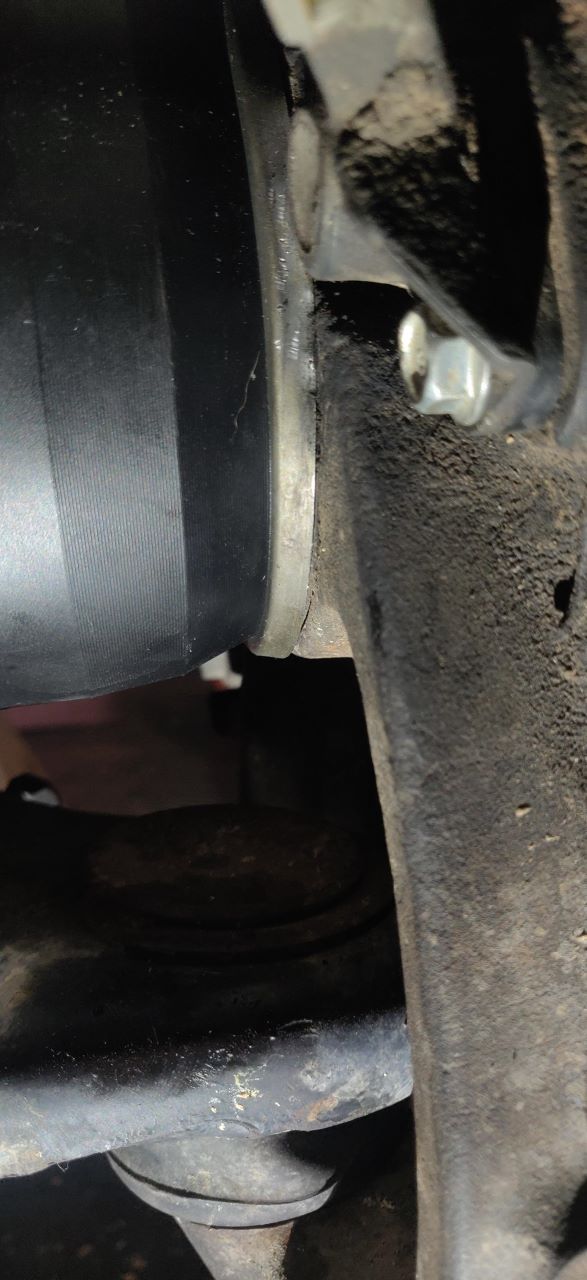Searched through a lot of these threads and don't see this as an issue - any ideas? This might apply more to a front axle thread as I also am replacing the CV on this side with brand new Toyota OEM, but if I messed up its more likely an issue with the bearing rebuild.
I cant get the snap ring to seat because of lack of clearance, so I tried my own tool and bent it, thought it might be the soft steel, so I also bought @TheForger's tool and its not budging. I thought maybe I didn't seat the inner oil seal far enough in - however I also sort of assume pulling with the tool would seat it if I didnt (although I could be wrong)
However, I am seeing this, which I think is where the problem is (pic below). There is no clearance from that flange on the CV to the knuckle. I cant find my feeler gauges so I will go to HF tomorrow, but I think this is my issue as they seem to be contacting each other.... yes I did drive the vehicle around the block and can't hear it, but theres no gap there.
Anyone ever run into this?

I cant get the snap ring to seat because of lack of clearance, so I tried my own tool and bent it, thought it might be the soft steel, so I also bought @TheForger's tool and its not budging. I thought maybe I didn't seat the inner oil seal far enough in - however I also sort of assume pulling with the tool would seat it if I didnt (although I could be wrong)
However, I am seeing this, which I think is where the problem is (pic below). There is no clearance from that flange on the CV to the knuckle. I cant find my feeler gauges so I will go to HF tomorrow, but I think this is my issue as they seem to be contacting each other.... yes I did drive the vehicle around the block and can't hear it, but theres no gap there.
Anyone ever run into this?

